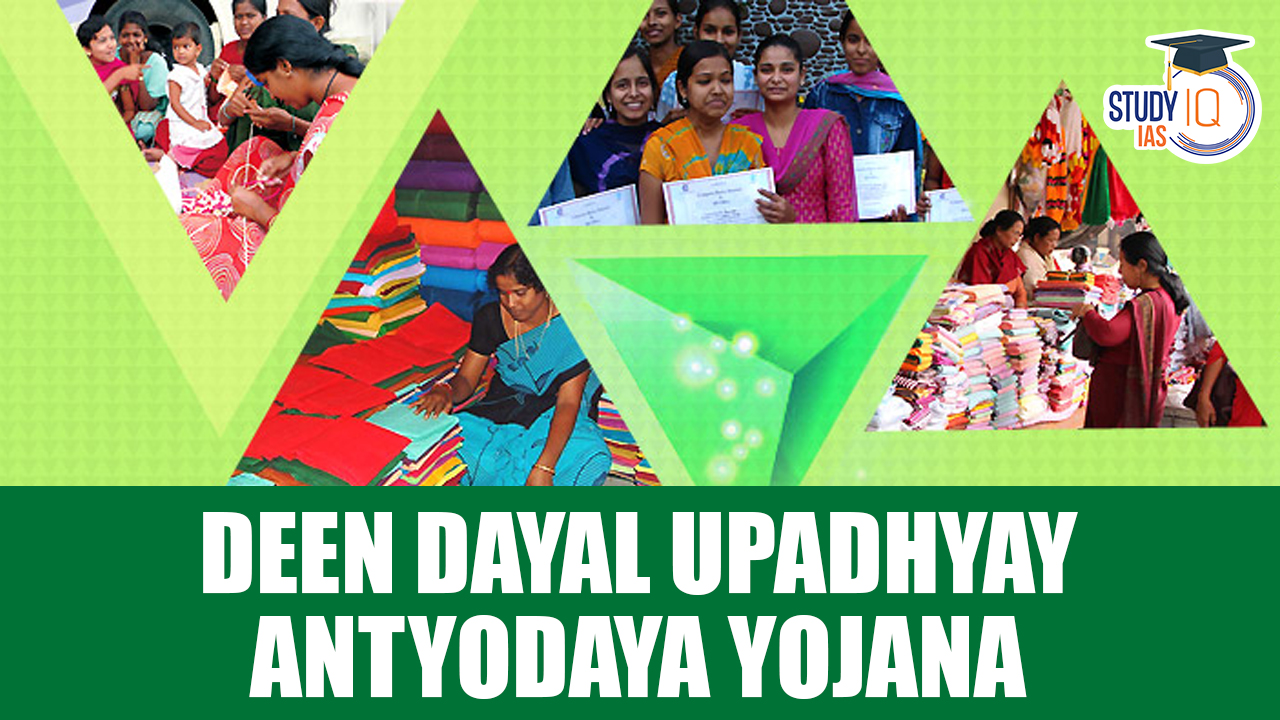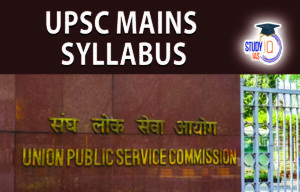Table of Contents
Deen Dayal Upadhyay Antyodaya Yojana
The National Rural Livelihood Mission (Ajeevika) and the National Urban Livelihood Mission, which were carried out by the Ministries of Rural Development and Housing and Urban Poverty Alleviation, respectively, are being replaced by the Deen Dayal Upadhyaya Antyodaya Yojana, or DAY.
Deen Dayal Upadhyay Antyodaya Yojana Introduction
As a revamped version of Swarna Jayanti Gramme Swarozgar Yojna (SGSY), Deen Dayal Upadhyay Antyodaya Yojana – National Livelihoods Mission (NRLM) was introduced by the Ministry of Rural Development (MoRD), Government of India, in June 2011. In order to increase household income for the rural poor through greater access to financial services and sustainable livelihood improvements, the Mission aspires to build effective institutional platforms for them. The programme was renamed Deendayal Antayodaya Yojana (DAY-NRLM) in November 2015.
Through self-managed Self Help Groups (SHGs) and federated institutions, the National Rural Livelihoods Mission (NRLM) has set out with an agenda to cover 7 Crore Rural Poor Households across 600 Districts, 6000 Blocks, 2.5 lakh Gramme Panchayats, and 6 lakh Villages in the Country and support them for livelihood collectives in a period of 8-10 years.
Additionally, the poor would benefit from improved social empowerment indicators, diversified risk, and expanded access to their rights, entitlements, and public services. In order to help the disadvantaged participate in the nation’s expanding economy, NRLM supplements their intrinsic strengths with resources including information, knowledge, skills, equipment, money, and collectivization.
Deen Dayal Upadhyay Antyodaya Yojana Mission
“To reduce poverty by facilitating the poor households’ access to gainful self-employment and skilled wage employment opportunities, resulting in a discernible improvement in their livelihoods on a sustainable basis, through building strong grassroots institutions of the poor.”
Deen Dayal Upadhyay Antyodaya Yojana Guiding Principles
Poor people have a strong desire to escape poverty and intrinsic abilities. To fully utilise the intrinsic potential of the impoverished, social mobilization and the development of robust institutions for the poor are essential. The process of social mobilization, institution building, and empowerment must be sparked by an external, committed, and sensitive support framework. This upward mobility is supported by services that promote information distribution, skill development, access to credit, access to marketing, and access to other sources of income.
Deen Dayal Upadhyay Antyodaya Yojana Values
The following are the guiding principles for all NRLM activities:
- Community self-reliance and self-dependence;
- Inclusion of the poorest and meaningful roles for the poorest in all processes;
- Transparency and accountability of all processes and institutions;
- Ownership and a key role for the poor and their institutions in all stages of planning, implementation, and monitoring.
Deen Dayal Upadhyay Antyodaya Yojana Features
Universal Social Mobilisation
Each recognised rural poor household must have at least one woman member added to the Self Help Group (SHG) network in a timely way. Particularly vulnerable tribal groups (PVTGs), people with disabilities (PwDs), victims of human trafficking, and bonded labourers are just a few examples of vulnerable communities that are given special attention. NRLM has developed unique approaches to reach out to these communities and assist them in escaping poverty.
Participatory Identification of Poor (PIP)
A well defined, open, and egalitarian process of community-level, participatory identification of the poor determines the target group’s inclusion under NRLM. The NRLM Target Group includes all households classified as low-income through the PIP procedure, and members of this group are eligible for all programme benefits. The Participatory Identification of the Poor (PIP) method is used to identify the target group. The PIP-derived NRLM Target Group (NTG) is unlinked from the BPL.
Community Funds as Resources in Perpetuity
Revolving Fund (RF) and Community Investment Fund (CIF) are resources that NRLM permanently donates to underprivileged institutions in order to improve their institutional and financial management capabilities and establish a track record that will enable them to secure mainstream bank financing.
Financial Inclusion
NRLM strives to promote financial inclusion on both the supply and demand sides. On the demand side, it encourages financial knowledge among the underprivileged and gives the SHGs and their federations catalytic money.
On the supply side, the Mission collaborates with the banking industry and promotes the use of ICT-based financial systems, business correspondents, and neighbourhood organisers like “Bank Mitras.” Additionally, it strives to provide all rural residents with protection from the risk of losing their assets, health, or both. Additionally, it focuses on remittances, particularly in regions where migration is common.
Livelihoods
Through its three pillars, NRLM focuses on stabilising and advancing the poor’s current portfolio of livelihoods–
- Vulnerability mitigation
- “livelihoods enhancement” by increasing and expanding current possibilities for a living and seizing new opportunities in the agricultural and non-agricultural sectors;
- “Employment” refers to developing skills for the outside labour market, while “Enterprises” refers to encouraging self-employed and entrepreneurial individuals (for micro-enterprises).
Deen Dayal Upadhyay Antyodaya Yojana Convergence and partnerships
Convergence
Convergence with other MoRD and other Central Ministries activities is highly valued by NRLM. Additionally, convergence is sought with state government projects to create connections, either directly or indirectly, with institutions serving the underprivileged.
Partnerships with NGOs and other CSOs
Partnerships with NGOs and other CSOs have been actively sought by NRLM on two levels: the strategic level and the implementation level. The relationships are governed by the basic principles and values of NRLM as well as a shared understanding of the procedures and results. This year, formal guidelines for partnerships with NGOs and CSOs were approved.
Linkages with PRIs
A mutually beneficial working relationship between Panchayats and institutions for the poor, especially at the level of Village Panchayats, needs to be intentionally structured and facilitated in light of the prominent responsibilities played by Panchayat Raj Institutions (PRIs). Such institutions and PRIs would offer formal channels for ongoing dialogues for the exchange of advice, support, and resource sharing.


 NCERT Books for UPSC Preparation, Check ...
NCERT Books for UPSC Preparation, Check ...
 UPSC Syllabus 2025, Check UPSC CSE Sylla...
UPSC Syllabus 2025, Check UPSC CSE Sylla...
 UPSC Mains Syllabus 2025, Optional Sylla...
UPSC Mains Syllabus 2025, Optional Sylla...





















